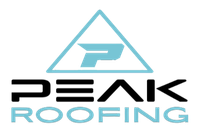High energy bills can often be linked to an overlooked yet crucial part of your home—the roof. While it quietly plays its role in maintaining indoor comfort, a well-installed, energy-efficient roof can significantly impact heating and cooling costs. A roof installed by a reputable contractor acts as the ultimate barrier, protecting against harsh weather, regulating indoor temperatures, and preventing high energy bills from draining your budget. From the materials used to its overall structural integrity, every aspect of your roof contributes to energy efficiency, making it a vital investment for long-term savings and year-round comfort.
The Importance of an Energy-Efficient Roof
High energy bills are a concern for many homeowners, and they often wonder about the factors that contribute to these escalating costs. While there are various reasons behind high energy bills, a roofing contractor can tell you that one frequently overlooked aspect is the role of the roof.
To comprehend the relationship between your roof and energy bills, it’s essential to recognize the significance of an energy-efficient roof. An energy-efficient roof is one that effectively manages the transfer of heat, helping to maintain a stable and comfortable indoor environment throughout the year. It achieves this by regulating heat gain during hot seasons and preventing heat loss during cold seasons.
Heat Gain and Loss
Understanding the basics of heat gain and loss through your roof is pivotal. During the summer, when the sun beats down on your roof, it can absorb a substantial amount of heat. If your roofing material is inefficient at reflecting or dissipating this heat, that heat can penetrate your home, making your interior warmer and causing your air conditioning system to work harder. This results in higher energy consumption as other components of the home attempt to compensate and, consequently, increase the cost of maintaining a comfortable living space.
Conversely, in the winter, your home may lose heat through the roof if it lacks adequate insulation or if the roofing material allows for significant heat transfer. As a result, your heating system has to compensate for this loss by working overtime to maintain a comfortable temperature indoors, leading to elevated energy costs.
Roofing Material Matters
One of the critical factors influencing the energy efficiency of your roof is the type of roofing material you choose. Different materials have varying degrees of reflectivity and thermal resistance, which can significantly impact your home’s energy consumption.
For example, traditional asphalt shingles, while affordable and widely used, tend to absorb heat and retain it, making your home warmer in the summer. In contrast, metal roofing or cool roofing materials, which are designed to reflect sunlight and heat, can help keep your home cooler by preventing excessive heat gain. This, in turn, reduces your reliance on air conditioning and lowers energy bills.
Insulation and Ventilation
Another vital aspect of an energy-efficient roof is the insulation and ventilation system beneath it. Proper insulation helps prevent heat loss during the winter and heat gain during the summer, creating a more comfortable and consistent indoor temperature. Without adequate insulation, your heating and cooling systems have to work harder to compensate for these temperature fluctuations, leading to increased energy usage and bills.
Additionally, proper ventilation is crucial for regulating attic temperatures. When attics become excessively hot, it can radiate heat into the living spaces below. An adequately ventilated attic helps dissipate this heat, reducing the load on your cooling system.
Roof Maintenance and Repairs
Regular roof maintenance and prompt repairs are essential for ensuring that your roof remains energy-efficient. Over time, roofing materials can degrade, leading to gaps, cracks, or leaks that allow conditioned air to escape and outdoor air to infiltrate. A damaged roof is a significant contributor to higher energy bills because it compromises the insulation and thermal performance of your home.
Through regular inspections and addressing any roofing issues promptly, you can mitigate the impact on your energy bills. This includes fixing damaged shingles, sealing leaks, and ensuring that your roof’s flashing and seals are intact.
Cool Roofing Solutions
In recent years, there has been a growing interest in cool roofing solutions as a way to reduce energy consumption and lower energy bills. Cool roofing materials are designed to reflect more sunlight and absorb less heat, helping to maintain a cooler indoor environment.
One popular cool roofing option is reflective roofing, which can be applied as a coating over existing roofing materials. This reflective coating bounces sunlight back into the atmosphere, reducing heat absorption and lowering indoor temperatures. Reflective roofing can be a cost-effective way to improve your home’s energy efficiency and reduce energy bills.
Among the materials used for cool roofing, metal roofing, light-colored asphalt shingles, and single-ply membranes like TPO or PVC are recognized for their excellent reflective capabilities. The combination of these materials with cool roofing techniques can significantly reduce heat transfer to your home’s interior, resulting in improved energy efficiency and more comfortable living spaces.
Solar Panels and Roofing Integration
The integration of solar panels with roofing systems is another innovative approach to reducing energy bills. Solar panels harness the power of the sun to generate electricity, which can offset your energy consumption from the grid. When strategically installed on your roof, solar panels can become a valuable addition to your energy-saving efforts.
However, it’s essential to consider the condition and suitability of your roof for solar panel installation. Roofing experts can assess whether your roof can support the additional weight of solar panels and ensure that the roofing materials are in good condition before installation.
Your roof plays a significant role in determining your home’s energy efficiency and, consequently, your energy bills. Factors such as the type of roofing material, insulation, ventilation, maintenance, and the presence of cool roofing solutions or solar panels can all impact your energy consumption. Homeowners looking to lower their energy bills should consider the condition of their roof and explore energy-efficient roofing options that can help create a more comfortable and cost-effective living environment. By investing in an energy-efficient roof and addressing roofing issues promptly, homeowners can enjoy the benefits of reduced energy bills and increased sustainability.
Peak Roofing & Exteriors
If you’re looking for an honest and experienced roofing contractor that can handle your home or business roofing needs in West Texas, look no further. Peak Roofing & Exteriors will deliver with quality and integrity. Contact us today and book your FREE inspection!

